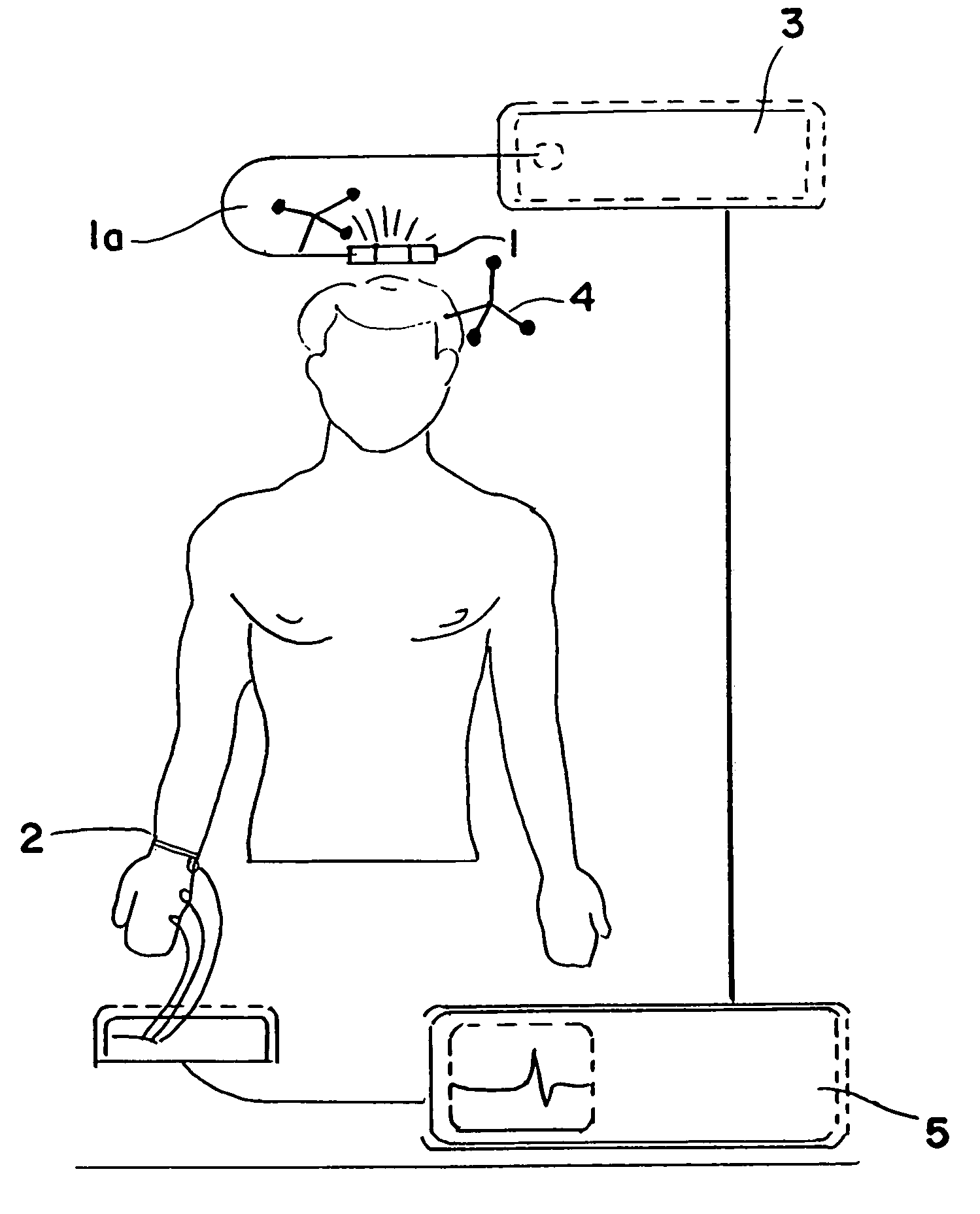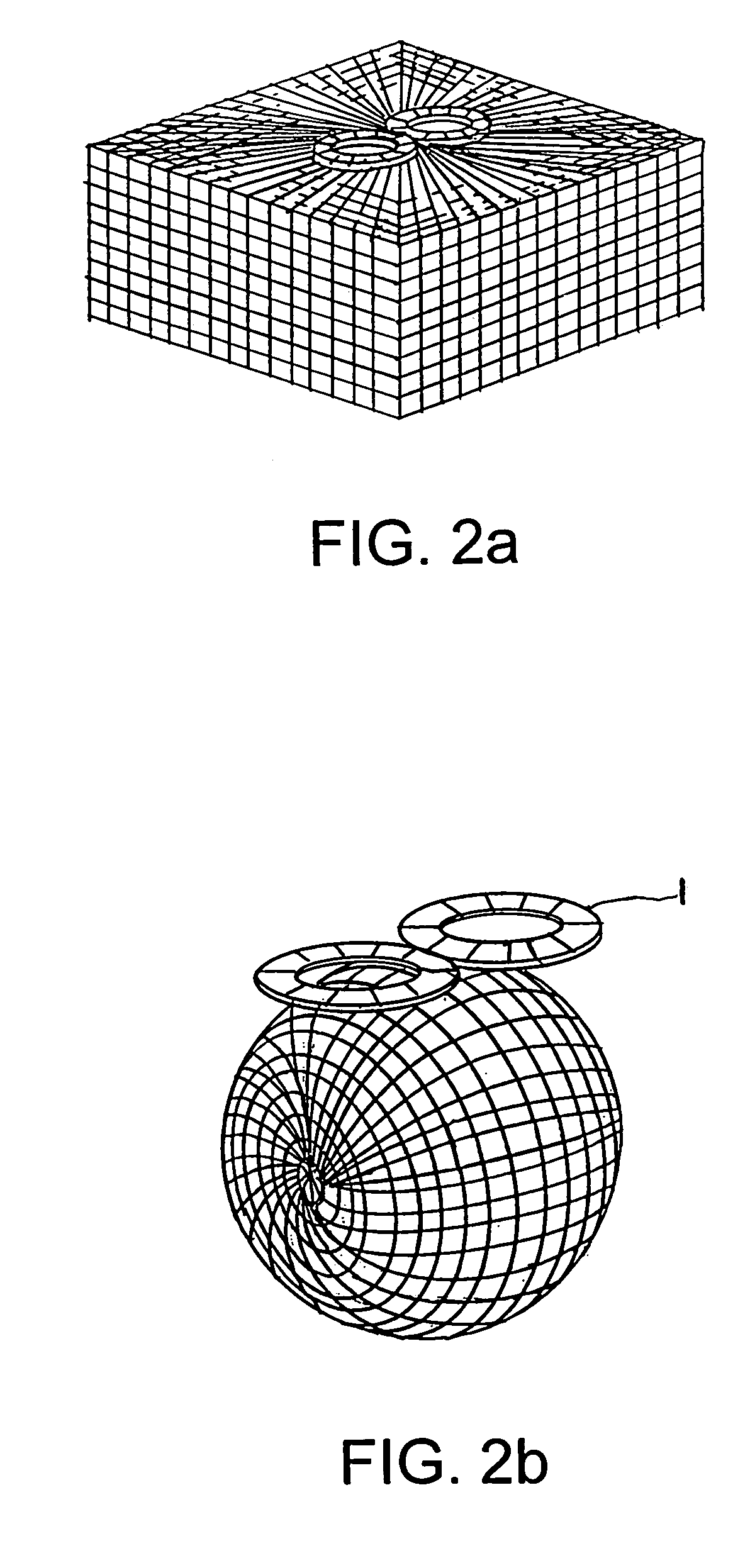[0007]It is an object of the present invention to propose a method and a device for stimulating specific areas of a brain, by which application may be simplified and the spatial accuracy in stimulating and therefore in localising specific areas of the brain may be improved.
[0010]In accordance with a further aspect of the present invention, a simulation model is produced of the head to be examined, wherein the data determined from recording the head's
spatial structure may be used to improve the simulation model. The electrical or
magnetic field generated by the induction device can thereby be relatively exactly focussed on a specific point in the brain by suitably positioning the induction device, since the
layers over the brain which exhibit different conductivities act like various dielectrics which have a decisive influence on focusing the field on the brain.
[0011]The two methods described above for analysing and simulating the induction device and for modelling the head may be used separately or in combination, to further improve focussing the field generated by the induction device.
[0012]Using the method in accordance with the invention,
transcranial magnetic stimulation (TMS) may be improved, and in particular made more precise, which enables specific areas of the brain, for example the aforementioned primary areas of the brain, to be precisely and non-invasively localised, which may for example improve pre-operative
surgical planning. The methods in accordance with the invention may however also be used to examine or cure other brain dysfunctions, such as for example for diagnosing
epilepsy or Parkinson's
disease. By using the methods in accordance with the invention, it is possible to map brain functions exactly via an
indirect method without having to open a person's cranium in order to directly access the brain.
[0013]The head is advantageously modelled by building a finite, multi-shelled model wherein electrical and / or magnetic fields for example may be calculated using finite-element methods and the individual shells advantageously modelled for example as nested spherical or
ellipsoid shells with adjustable thicknesses, which may for instance be arranged concentrically. The model is particularly advantageously sub-divided into three shells, wherein the respective shells from the outermost in simulate the
scalp, the cranial bones and the surface of the brain. These three different areas of the head exhibit different electrical and magnetic characteristics, such that modelling a head using three shells with for example different
dielectric constants and / or different conductivities may for example provide very good results if the values used for the electrical and / or magnetic parameters come as close as possible to values determined or calculated in experiments. The
shell model is also advantageously modified according to the recorded spatial structure of a head to be examined, wherein the
shell model is adapted as exactly as possible to the geometry of a head to be examined, for example by extending and / or distorting or shifting individual shells.
[0014]Preferably, markers—particularly preferably, passive markers—are arranged on the head to be examined and / or on the induction device, in order to be able to track the induction device and / or the head. Referencing and tracking persons and / or instruments is known from the prior art and will not be described here in detail. The induction device and head are matched in order to thus be able to determine the relative position of the induction device and the head as precisely as possible. Using markers has the
advantage that a person under examination does not have to be securely positioned, but rather specific areas of the brain can still be precisely stimulated, even for a person moving freely around a room.
 Login to View More
Login to View More  Login to View More
Login to View More 


